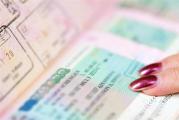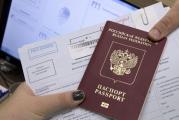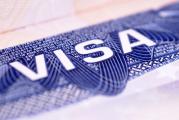All about the new Schengen visa fingerprinting system
On September 14, 2015, Russia joined the unified visa information system. Europe has been implementing it since 2011, systematically throughout the world. The procedure for applying for a visa was supplemented by a new item: biometrics. Fingerprints for a Schengen visa are required. True, there are nuances in this matter.
Prior to our country, the WIS covered the African states, the Middle East, the countries of the Persian Gulf, Central and North America. The system allows the consulates of the Schengen countries to exchange information about visas issued and the reasons for refusal and to get in touch with checkpoints at the borders.
At first glance, fingerprinting has complicated the process of obtaining a visa. However, in the first months of operation, the system proved the opposite. Consulates of most states have become more loyal to tourists. The number of long-term visas has increased. There are other benefits too:
- High security of data storage.
- The impossibility of using other people's tickets by attackers.
- Reducing the number of errors when applying for a visa.
- Fast passport control at the border. Border guards are not required to ask questions or require additional documents to identify the tourist. Biometrics will "tell" everything itself.
Border control officers can perform a fingerprint scan procedure to compare with the data in the database. If a discrepancy suddenly appears, this means an automatic refusal of entry.
How to pass biometrics
Fingerprints for the Schengen visa are given at the first visa request after September 14, 2015. This is done along with the serving. Biometrics involves scanning 10 fingerprints. The applicant takes a digital photograph, which, together with the results of fingerprinting, is sent to a single database. The process takes several minutes.
A foreign citizen can undergo biometrics at the consulate or visa center. Intermediaries (eg travel companies) do not collect data. Therefore, the first time the tourist must apply in person. Biometric information is stored for 5 years. If during this period a foreigner makes several visas, fingerprinting is not required again.
The visa system is unified, therefore it does not matter in the consulate of which country the applicant underwent biometrics.
Thus, a foreign citizen, who for the first time after September 14, 2015, must do the following:
- Prepare documents, fill out an application form and visit the visa center or consulate in person.
- Submit your fingerprints and take a photo.
- Come again when the visa is ready and pick up your passport.
Who is exempt from biometrics
Fingerprinting is not required for everyone. The Visa Code of the European Union exempts some citizens from it. It:

- Children 12 years old and under.
- Persons who are missing fingers due to injury or congenital physical abnormalities. If some fingers are in place, you need to scan everything that is. If the injuries and defects are temporary (abrasions, cuts, bruises, etc.), the applicant will be asked to submit prints on another day, when the skin returns to normal.
- Heads of State, members of Governments and members of royal families during official visits.
Visa cost and processing time
The appearance of biometrics since September 14, 2015 did not affect the cost of a Schengen visa. The visa fee, as before, is 35 euros. Visa Application Centers charge an additional service fee. It is different everywhere, but does not exceed 30 euros.
The deadline for consideration of documents has not changed. A response on the issuance of a visa or refusal is given within 10 days. Sometimes the period is extended to a month.

Applying for a second and subsequent visas
Visas issued before September 14, 2015 are valid for the entire period of validity. Fingerprints must be submitted when this period expires.
An applicant who has undergone biometrics is exempted from it for 5 years. Next time you can apply through an intermediary: an accredited courier company, a close relative or a travel agency.
Mobile biometrics is a service that allows you to take fingerprints outside of consulates and visa centers.

This requires portable equipment. Outwardly, it resembles an ordinary suitcase. The compact size allows you to bring it wherever it is convenient for the applicant (home, office, etc.).
Not every consulate has a mobile biometrics service. The pioneers were Estonia, Slovenia, Spain, Czech Republic, Lithuania, Iceland, Portugal, Denmark and Austria.
Departure of specialists with portable equipment is paid separately. Price - from 150 to 1600 euros. Mobile biometrics is ordered when applying for visas for a group of people in cities where there is no visa center. As a result, it turns out to be cheaper than a trip to the consulate or a stationary biometric data collection point.




